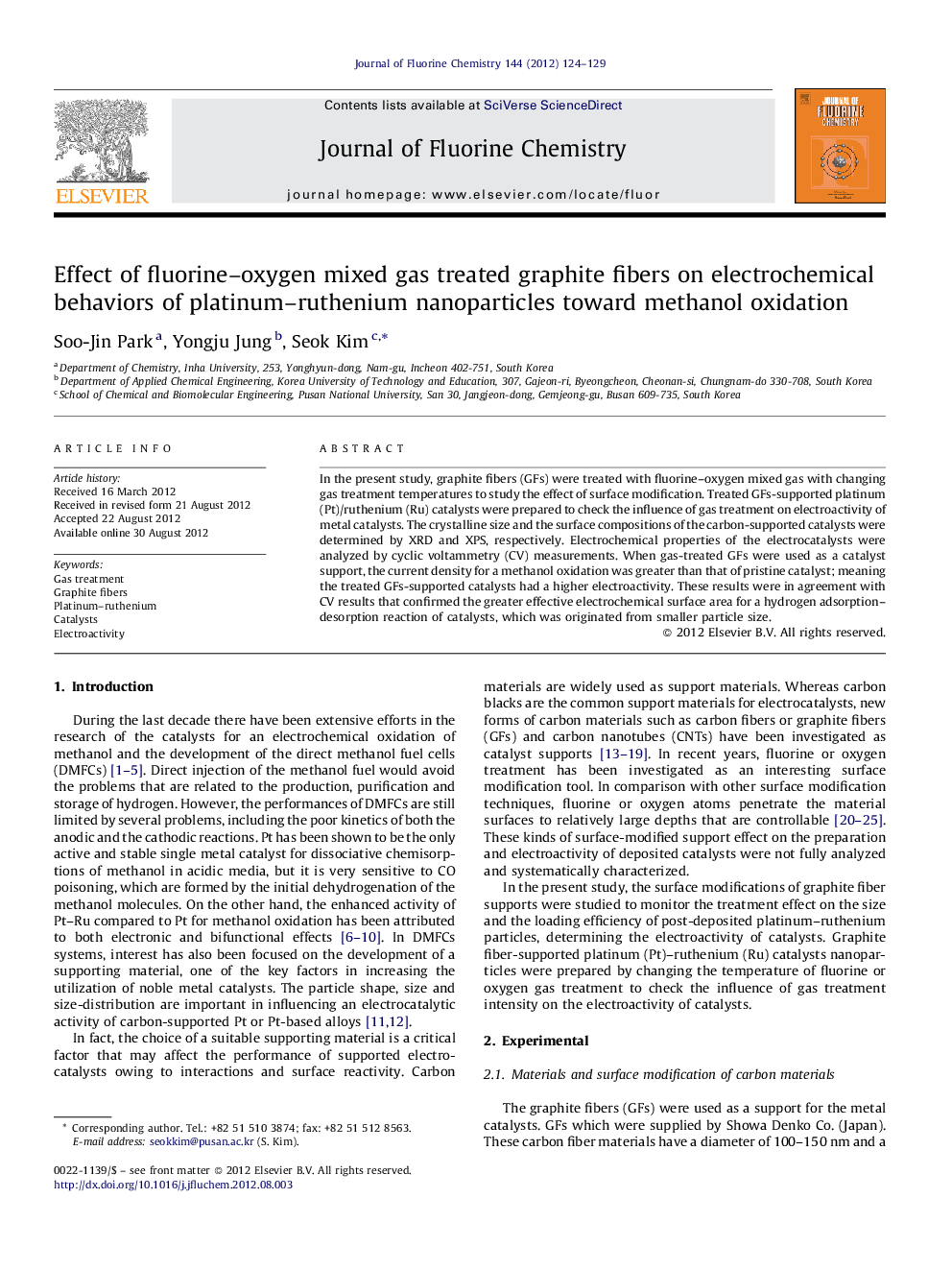| Article ID | Journal | Published Year | Pages | File Type |
|---|---|---|---|---|
| 1313702 | Journal of Fluorine Chemistry | 2012 | 6 Pages |
In the present study, graphite fibers (GFs) were treated with fluorine–oxygen mixed gas with changing gas treatment temperatures to study the effect of surface modification. Treated GFs-supported platinum (Pt)/ruthenium (Ru) catalysts were prepared to check the influence of gas treatment on electroactivity of metal catalysts. The crystalline size and the surface compositions of the carbon-supported catalysts were determined by XRD and XPS, respectively. Electrochemical properties of the electrocatalysts were analyzed by cyclic voltammetry (CV) measurements. When gas-treated GFs were used as a catalyst support, the current density for a methanol oxidation was greater than that of pristine catalyst; meaning the treated GFs-supported catalysts had a higher electroactivity. These results were in agreement with CV results that confirmed the greater effective electrochemical surface area for a hydrogen adsorption–desorption reaction of catalysts, which was originated from smaller particle size.
Graphical abstractIn the present study, graphite fibers (GFs) were treated by fluorine–oxygen mixed gas with changing gas treatment temperatures to study the effect of surface modification. Figure shows current–voltage curves of PtRu/GFs catalysts using (a) pristine GFs, (b) GFs-RT, (c) GFs-100, (d) GFs-200, and (e) GFs-300 in 0.5 M methanol + 1.0 M H2SO4 solution. When gas-treated GFs were used as a catalyst support, the current density for a methanol oxidation was greater than that of pristine catalyst; meaning the treated GFs-supported catalysts had a higher electroactivity.Figure optionsDownload full-size imageDownload as PowerPoint slideHighlights► PtRu particles were deposited on fluorine–oxygen mixed gas-treated graphite nanofibers. ► Gas treatment temperature was changed to modify surface characteristics. ► The catalyst showed the improved activity using treated graphite nanofibers. ► Activity was dependent on particle size and specific surface area of catalysts.
